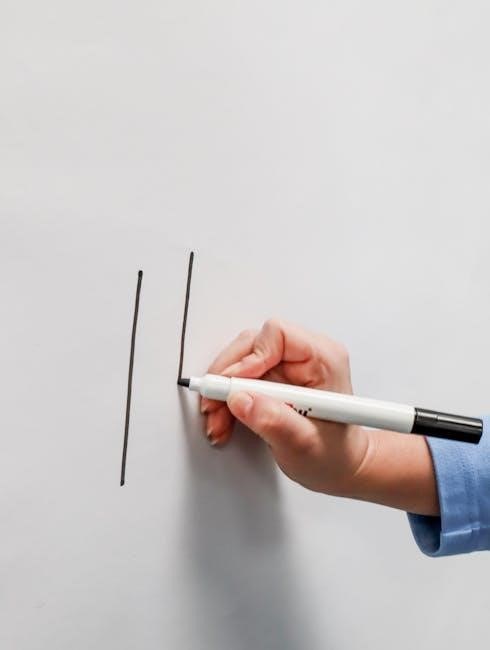Nesco Pressure Cooker Instruction Manual: A Comprehensive Guide
Welcome! This guide provides comprehensive instructions for using your Nesco pressure cooker. Learn about models, features, operation, safety, cleaning, troubleshooting, and even canning.
Understanding Nesco Pressure Cooker Models
Nesco offers a range of pressure cookers, each designed to meet various cooking needs. From digital 3-in-1 cookers to manual pressure canners, understanding the differences between models is crucial for selecting the right one for you. Some models, like the PC-6-25-30TPR, are digital and offer multiple functions beyond pressure cooking, such as slow cooking and steaming. Others, like the MPC-16QT and MPC-24QT, are manual pressure canners designed specifically for preserving food.
Digital models often feature pre-set programs for different types of food, making cooking easier and more convenient. They also include timers and automatic keep-warm functions. Manual models, on the other hand, offer more control over the cooking process and are ideal for canning.
When choosing a Nesco pressure cooker, consider factors such as capacity, features, and intended use. Smaller models are suitable for individuals or small families, while larger models are better for larger families or for canning. Also, note that electric pressure cookers used as pressure canners don’t tend to hold to established assumptions, and recipes haven’t been tested in such a scenario, and may result in under-processed food.

Here’s a brief overview of some popular Nesco pressure cooker models:
- PC-6-25-30TPR: A digital 3-in-1 cooker with pressure cooking, slow cooking, and steaming functions.
- NPC-9 Smart Canner and Cooker: An electric pressure cooker and canner designed for safe low-acid food canning.
- MPC-16QT and MPC-24QT: Manual pressure canners with large capacities for preserving food.
- PC6-13: 6L Digital Pressure Cooker.
By understanding the different Nesco pressure cooker models, you can choose the one that best fits your cooking style and needs.
Key Components and Features of Nesco Pressure Cookers
Nesco pressure cookers are designed with several key components and features that ensure safe and efficient cooking. Understanding these components is essential for proper use and maintenance of your pressure cooker.
Here are some of the key components and features:
- Pressure Regulator Knob: This knob controls the cooking function, allowing you to select between pressure cooking (high or low) and steam settings. Align the dots for the desired setting.
- Floating Valve: A safety valve that engages when pressure builds inside the cooker. It prevents the lid from being opened while the cooker is pressurized. Do not attempt to defeat this safety feature.
- Rubber Gasket: Creates an airtight seal between the lid and the pot, which is necessary for pressure cooking.
- Removable Cooking Pot: The inner pot where food is placed for cooking. It is removable for easy cleaning.
- Filter: Protects the pressure regulator and is removable for easy cleaning.
- Control Panel: Features buttons for selecting cooking functions, setting timers, and starting/stopping the cooking process.
- Pressure Indicator Valve: An easy-to-read indicator valve shows the pressure level inside the cooker.
- Lid: The lid locks securely onto the base to create a sealed environment for pressure cooking.
Other important features may include:
- High and Low Pressure Settings: Allows you to adjust the cooking pressure based on the type of food being cooked. Low pressure controls cooking pressure at 5 pounds above atmospheric pressure, while high pressure controls it at 10 pounds above atmospheric pressure.
- Safety Mechanisms: Designed with multiple safety features, such as overpressure protection and a lid-locking mechanism.
- Automatic Keep Warm Function: Keeps food warm after cooking is complete.
- Digital Display: Shows the cooking time, pressure level, and other relevant information.
Familiarizing yourself with these components and features will help you use your Nesco pressure cooker safely and effectively. Always refer to your specific model’s manual for detailed instructions and safety precautions.
Operating Instructions: A Step-by-Step Guide
Using your Nesco pressure cooker is straightforward once you understand the basic steps. This guide provides a step-by-step approach to help you get started:
- Prepare Your Ingredients: Chop, slice, or dice your ingredients as required by your recipe. Ensure that all ingredients are fresh and of good quality.
- Add Ingredients to the Pot: Place the removable cooking pot inside the pressure cooker base. Add your ingredients to the pot, following your recipe’s instructions. Be careful not to overfill the pot; never fill it more than 4/5 full, especially when cooking foods that expand during cooking.
- Add Liquid: Add the appropriate amount of liquid (water, broth, sauce) to the pot. The amount of liquid will vary depending on the recipe, but it is essential to have enough liquid to create steam and pressure.
- Secure the Lid: Place the lid on the pressure cooker and ensure it is properly sealed. The lid should lock into place securely.
- Select the Pressure Setting: Use the pressure regulator knob to select the desired pressure setting (high or low) based on your recipe. Refer to the pressure settings section of this manual for more information.
- Set the Cooking Time: Use the control panel to set the cooking time according to your recipe. Some models may have preset cooking programs for different types of food.
- Start Cooking: Press the “Start” button to begin the cooking process. The pressure cooker will start building pressure, and the floating valve will rise as the pressure increases.
- Monitor the Pressure: Keep an eye on the pressure indicator valve to ensure that the pressure is within the desired range.
- Release Pressure: Once the cooking time is complete, you will need to release the pressure before opening the lid. There are two methods for releasing pressure: natural pressure release and quick pressure release. Refer to the safety section for guidelines.
- Open the Lid: After the pressure has been fully released, carefully open the lid. Be cautious of any remaining steam.
- Serve and Enjoy: Your dish is now ready to serve and enjoy!

Important Notes:
- Always follow the safety precautions outlined in this manual.
- Never force the lid open while the cooker is pressurized.
- Adjust cooking times as needed based on your altitude and the specific ingredients used.
Pressure Settings: High and Low Pressure Explained
Nesco pressure cookers offer both high and low pressure settings to accommodate a variety of recipes and cooking needs. Understanding the difference between these settings is crucial for achieving optimal results and ensuring food safety.
High Pressure Setting:
- Description: The high pressure setting typically controls the cooking pressure at approximately 10 pounds per square inch (PSI) above atmospheric pressure. This higher pressure allows the cooker to reach a higher temperature, significantly reducing cooking times.
- Use Cases: Ideal for cooking tough cuts of meat, dried beans, and foods that require longer cooking times to become tender; It’s also suitable for canning low-acid foods when following tested canning recipes.
- Benefits: Faster cooking times, tenderizes food effectively, and helps retain nutrients.
- Considerations: Requires precise timing to avoid overcooking. Not suitable for delicate foods that can easily become mushy.

Low Pressure Setting:
- Description: The low pressure setting typically controls the cooking pressure at approximately 5 PSI above atmospheric pressure. This lower pressure results in a slightly lower cooking temperature and longer cooking times compared to the high pressure setting.
- Use Cases: Best for cooking delicate vegetables, fish, and foods that can easily overcook. It’s also suitable for recipes where a gentler cooking process is desired to preserve texture and flavor.
- Benefits: Prevents overcooking, preserves texture and flavor of delicate foods, and offers more control over the cooking process.
- Considerations: Cooking times are longer compared to the high pressure setting. May not be suitable for tough cuts of meat that require high pressure to tenderize.
Choosing the Right Setting:
- Refer to your recipe for specific pressure setting recommendations.
- Consider the type of food you are cooking. Tougher foods generally require high pressure, while delicate foods benefit from low pressure.
- Adjust cooking times based on the pressure setting used. Foods cooked at low pressure will require longer cooking times than those cooked at high pressure.
Important Note: Always follow the manufacturer’s instructions and tested recipes when using your Nesco pressure cooker. Improper use can result in overcooked food, undercooked food, or safety hazards.
Safety Features: Floating Valve and Pressure Regulator
Nesco pressure cookers are equipped with several safety features designed to prevent accidents and ensure safe operation. Two of the most important safety components are the floating valve and the pressure regulator. Understanding how these features work is essential for using your pressure cooker safely and effectively.
Floating Valve:
- Function: The floating valve is a safety mechanism that indicates the pressure level inside the cooker. It also prevents the lid from being opened while there is still pressure inside.
- Operation: When the pressure inside the cooker builds up, the floating valve rises, sealing the lid and indicating that the cooker is pressurized. The lid cannot be opened while the floating valve is in the raised position.
- Importance: Prevents accidental opening of the cooker while under pressure, which could result in burns or injuries.
- Maintenance: Ensure the floating valve is clean and free from obstructions. Check its movement before each use to ensure it rises and falls freely.
- Troubleshooting: If the floating valve does not rise or seal properly, check for food debris or damage. Refer to the troubleshooting section of your manual for further assistance.
Pressure Regulator:
- Function: The pressure regulator maintains the desired pressure level inside the cooker by releasing excess steam.
- Operation: The pressure regulator is typically a weighted valve or a spring-loaded mechanism that allows steam to escape when the pressure exceeds the set level. This prevents the pressure from building up to dangerous levels.
- Importance: Regulates the pressure inside the cooker, preventing over-pressurization and potential explosions.
- Maintenance: Keep the pressure regulator clean and free from obstructions. Check its movement before each use to ensure it releases steam properly.
- Troubleshooting: If the pressure regulator is not releasing steam or is releasing steam continuously, check for food debris or damage. Refer to the troubleshooting section of your manual for further assistance.
Additional Safety Tips:
- Never attempt to force the lid open while the cooker is pressurized.
- Always release pressure completely before opening the lid.
- Inspect the pressure cooker regularly for any signs of damage or wear.
- Follow all safety instructions provided in the user manual.
By understanding and properly maintaining the floating valve and pressure regulator, you can ensure the safe and reliable operation of your Nesco pressure cooker.
Cleaning and Maintenance: Ensuring Longevity
Proper cleaning and maintenance are crucial for extending the life of your Nesco pressure cooker and ensuring its safe and efficient operation. Regular cleaning prevents food buildup, which can affect performance and safety. Following these guidelines will help you keep your pressure cooker in top condition.
Cleaning the Inner Pot:
- After Each Use: Wash the inner pot with warm, soapy water. Use a non-abrasive sponge or cloth to avoid scratching the surface.
- Stubborn Food Residue: For burnt-on food, soak the pot in warm, soapy water for several hours or overnight. You can also boil water in the pot with a small amount of dish soap to loosen the residue.
- Dishwasher Safe: Check your manual to see if the inner pot is dishwasher safe. If so, you can place it in the dishwasher for convenient cleaning.
Cleaning the Lid:
- Regular Cleaning: Wipe the lid with a damp cloth after each use. Pay special attention to the sealing ring and pressure release valve.
- Sealing Ring: Remove the sealing ring after each use and wash it with warm, soapy water. Ensure it is completely dry before replacing it. Replace the sealing ring if it becomes cracked, brittle, or deformed.
- Pressure Release Valve: Remove the pressure release valve and clean it thoroughly to ensure it is free from obstructions. Use a small brush or toothpick to remove any food particles.
- Anti-Block Shield: Some models have an anti-block shield that prevents food particles from clogging the pressure release valve. Remove and clean this shield regularly.
Cleaning the Exterior:
- Wipe Down: Wipe the exterior of the pressure cooker with a damp cloth to remove any spills or splatters.
- Avoid Immersion: Never immerse the pressure cooker base in water or any other liquid. The base contains electrical components that can be damaged by water.

Maintenance Tips:
- Check the Sealing Ring: Inspect the sealing ring before each use to ensure it is in good condition. Replace it if it is damaged or worn.
- Inspect the Valves: Regularly check the pressure release valve and floating valve to ensure they are clean and functioning properly.
- Store Properly: Store the pressure cooker in a clean, dry place. Do not store it with the lid locked in place, as this can damage the sealing ring.
- Descaling: If you notice mineral buildup in the inner pot, descale it by boiling a mixture of water and vinegar.
Additional Notes:
- Always unplug the pressure cooker before cleaning.
- Allow the pressure cooker to cool completely before cleaning.
- Refer to your Nesco pressure cooker manual for specific cleaning instructions and recommendations.
By following these cleaning and maintenance tips, you can ensure that your Nesco pressure cooker remains in excellent condition for years to come.
Troubleshooting Common Issues
Even with proper use and maintenance, you might encounter some issues with your Nesco pressure cooker. This section provides troubleshooting tips for common problems, helping you identify the cause and find a solution. Always refer to your specific model’s manual for detailed instructions and safety precautions before attempting any troubleshooting steps.
Problem: Pressure Cooker Not Building Pressure
- Possible Causes:
- Insufficient liquid in the pot
- Sealing ring not properly installed or damaged
- Pressure release valve not closed or blocked
- Lid not sealed correctly
- Solutions:
- Ensure you have enough liquid (at least 1 cup) in the pot for steam generation.
- Check the sealing ring for proper placement and any signs of damage. Replace if necessary.
- Make sure the pressure release valve is in the “Sealing” or “High Pressure” position and is not obstructed.
- Ensure the lid is properly aligned and locked into place.
Problem: Food is Not Cooking Properly
- Possible Causes:
- Incorrect cooking time
- Incorrect pressure setting
- Too much food in the pot
- Solutions:
- Consult your recipe and the pressure cooker manual for recommended cooking times.
- Verify that you are using the correct pressure setting (High or Low) for your food.
- Do not overfill the pot. Follow the recommended fill levels (usually no more than 2/3 full).
Problem: Steam Leaking from the Lid
- Possible Causes:
- Sealing ring not properly installed or damaged
- Debris on the sealing ring or lid rim
- Solutions:
- Check the sealing ring for proper placement and any signs of damage. Clean the sealing ring and lid rim to remove any debris. Replace the sealing ring if necessary.
Problem: Pressure Cooker Displaying an Error Code
- Possible Causes:
- Various electronic or sensor malfunctions
- Solutions:
- Consult your pressure cooker manual for a list of error codes and their corresponding solutions. Try resetting the pressure cooker by unplugging it for a few minutes and then plugging it back in. If the error persists, contact Nesco customer service.
Problem: Floating Valve Not Dropping After Cooking
- Possible Causes:
- Pressure still present inside the cooker
- Floating valve is blocked
- Solutions:
- Allow the pressure to release naturally or use the quick release method (carefully!) as described in your manual.
- Check the floating valve for any obstructions and clean if necessary.
Important Safety Note: If you are unable to resolve an issue, or if you suspect a safety problem, do not attempt to repair the pressure cooker yourself. Contact Nesco customer service for assistance.
